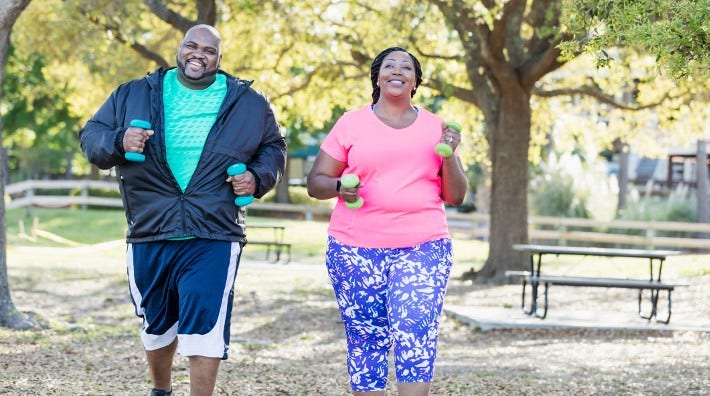It’s Never Too Late to Get More Exercise

A new study shows once again, that getting some exercise will pay healthy dividends, even if you start making the effort later in life. Researchers found when older adults increased their leisure-time activity - even if they weren’t active as teenagers or younger adults - their risk of dying from cancer, heart disease and some other causes declined, compared to older adults who were not regularly active.
The study looked at exercise people do outside of work duties or usual everyday tasks. For example, walking from the parking garage to your office doesn’t count as a leisure-time activity, but taking a walk around the building at lunch does. The study was published March 8, 2019 in JAMA Network Open.
Researchers looked at data from more than 315,000 people who were part of the National Institutes of Health-AARP Diet and Health Study. Participants answered questions about how much leisure-time physical activity they got during 4 age periods in their lives: 15 to 18 years, 19 to 29 years, 35 to 39 years, and 40 to 61 years.
They found that those who maintained the highest amount of leisure-time physical activity in every age group were at a lower risk of dying of cancer, heart disease, and any cause compared with the least active people. Those who were less active throughout most of their adult life but who increased leisure-time physical activity during years 40 – 61 also had a lower risk of dying of cancer, heart disease, and any cause.
The researchers conclude that adults who are active should try to stay active, and those who are not should try to become more active, no matter how old they are.
Exercise tips for older adults
The American Cancer Society recommends all adults get at least 150 minutes of moderate-intensity activity or 75 minutes of vigorous-intensity activity every week, preferably spread throughout the week.
Examples of moderate-intensity activities include brisk walking, dancing, leisurely bicycling, yoga, golfing, softball, doubles tennis, and general yard and garden maintenance. Vigorous-intensity activities include jogging, running, fast bicycling, swimming, aerobic dance, soccer, singles tennis, and basketball. To be considered leisure-time activities, these would be in addition to those that are part of your usual routine. Remember to check with your doctor before starting or changing an exercise routine.
Experts recommend 4 types of exercise for older adults:
- Endurance exercises such as brisk walking and dancing improve the health of your heart, lungs, and circulatory system. These exercises can make it easier for you to do things such as mow the lawn and climb stairs.
- Strength exercises like lifting weights and using stretchy resistance bands can increase muscle strength that you need for activities like carrying groceries and lifting grandchildren.
- Balance exercises can help make you more stable and may prevent falls – a major health risk for older adults. Try standing on one foot or taking a tai chi class.
- Stretching or flexibility exercises such as yoga poses can give you more freedom of movement for bending to tie your shoes or looking over your shoulder as you back out of the driveway.
- Reviewed by
- Citations

The American Cancer Society medical and editorial content team
Our team is made up of doctors and oncology certified nurses with deep knowledge of cancer care as well as editors and translators with extensive experience in medical writing.
Association of Leisure-Time Physical Activity Across the Adult Life Course With All-Cause and Cause-Specific Mortality. Published March 8, 2019 in JAMA Network Open. First author Pedro F. Saint-Maurice, PhD, National Cancer Institute, Rockville, Maryland.
American Cancer Society news stories are copyrighted material and are not intended to be used as press releases. For reprint requests, please see our Content Usage Policy.




